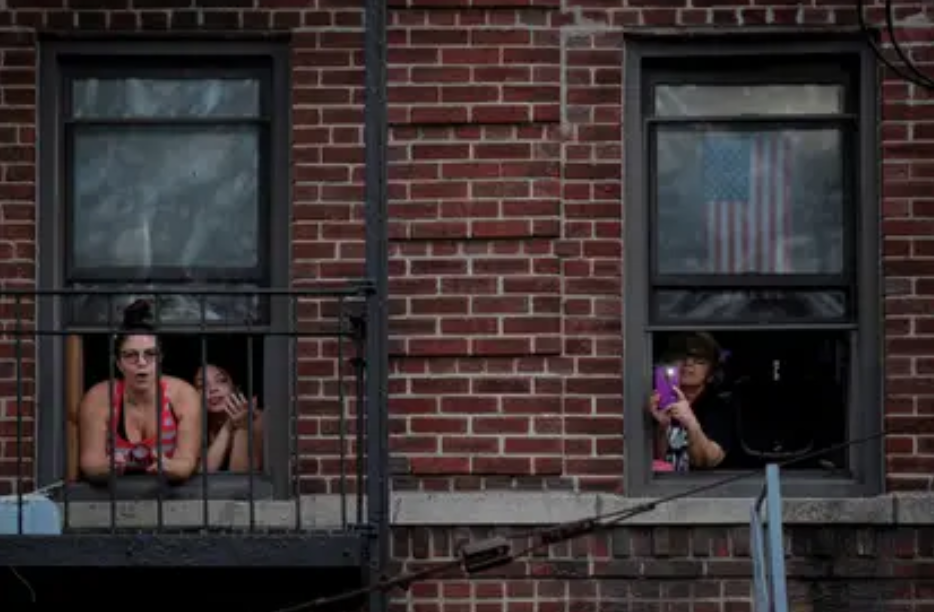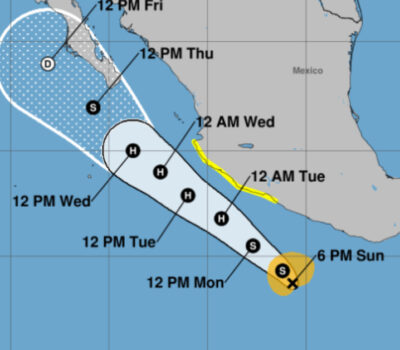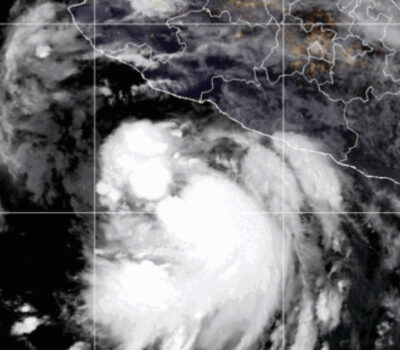According to historians, pandemics have two types of end: the medical, which occurs when incidence and death rates plummet, and the social, when the epidemic of fear of disease decreases.
“When people ask ‘When will this be over?’ they ask about the social distancing,” says Jeremy Greene, medical historian at Johns Hopkins.
In other words, an end can occur not because the disease has been overcome, but because people tire of panicking and learn to live with it.
Harvard historian Allan Brandt said something similar is happening with COVID-19: “As we have seen in the open economy debate, many questions about what is called the end are determined not by medical data and of public health, but by sociopolitical processes”.
The endings “are very, very messy,” says Dora Vargha, a historian at the University of Exeter. “Looking back, we have a weak narrative. For whom does the epidemic end and who can decide? ”
An epidemic of fear can occur even without an epidemic of disease. Dr. Susan Murray of the Royal College of Surgeons in Dublin saw this first hand in 2014, when she was a member of a rural hospital in Ireland.
In a span of a few months, more than 11,000 people in West Africa had died of Ebola, a terrifying viral disease that is highly infectious and often fatal. The epidemic seemed to be diminishing, and no case had occurred in Ireland, but public fear was palpable.
“On the streets and in the rooms, people are anxious, ” Murray recently recalled in an article in The New England Journal of Medicine. “ Having the wrong skin color is enough to earn you a disapproving look from your fellow passengers on the bus or on the train. Cough once, and you will see them walking away from you. ”
Dublin hospital workers were warned to prepare for the worst. They were terrified and concerned about the lack of protective equipment. When a young man came to the emergency room from a country with Ebola patients, no one wanted to approach him; the nurses went into hiding, and the doctors threatened to leave the hospital.
Only Murray dared to treat him, she wrote, but his cancer was so advanced that all she could do was offer him palliative care. A few days later, tests confirmed that the man did not have Ebola; he died an hour later. Three days later, the World Health Organization declared that the Ebola epidemic had ended.
Murray wrote: “If we are not prepared to fight fear and ignorance so actively and thoughtfully in the way we fight any other virus, it is possible that fear can do terrible harm to vulnerable people, even in places that never see a single case of infection during an outbreak. And an epidemic of fear can have far worse consequences when compounded by issues of race, privilege, and language. ”
The bubonic plague has struck multiple times in the past 2000 years, killing millions of people and altering the course of history. Each epidemic amplified the fear that came with the next outbreak.
The disease is caused by a strain of the Yersinia pestis bacteria, which lives on fleas in rats. But bubonic plague, which became known as the black plague, can also be transmitted from an infected person to another infected person through respiratory droplets. So it cannot be eradicated simply by killing rats.
Historians describe three great waves of plague, says Mary Fissell, a historian at Johns Hopkins: the Justinian Plague, in the 6th century; the medieval epidemic, in the XIV century; and a pandemic that struck in the late 19th century and early 20th century.
The medieval pandemic started in 1331 in China. The disease, along with a civil war that was raging at the time, killed half of China’s population. From there, the plague moved along trade routes to Europe, North Africa, and the Middle East. Between 1347 and 1351, it killed at least a third of the European population. Half the population of Siena, Italy died.
“It is impossible for the human tongue to tell the horrible truth,” wrote the fourteenth-century chronicler Agnolo di Tura. “In fact, someone who did not see such horror can be called blessed .” Those infected, he wrote, “swell under the armpits and in the groin, and fall while talking .” The dead were buried in pits in piles.
In Florence, Giovanni Boccaccio wrote: “Dead people were given no more respect than they would be given to dead goats today.” Some hid in their houses. Others refused to accept the threat. Boccaccio wrote that his way of dealing with it was “to drink a lot, enjoy life to the fullest, sing and have fun, satisfy all cravings when the opportunity arose, and dismiss everything as if it were a great joke.”
That pandemic ended, but the plague returned. One of the worst outbreaks began in China in 1855 and spread worldwide, killing more than 12 million people in India alone. Bombay health authorities torched entire neighborhoods trying to rid them of the plague. “No one knew if it was of any use,” said Frank Snowden, a Yale historian.
It’s unclear what made the bubonic plague go away. Some scholars have argued that the cold weather killed the disease-carrying fleas, but that would not have disrupted transmission via the airways, Snowden noted.
Or maybe it was a change in the rats. In the 19th century, the plague was carried not by black rats, but by brown rats, which are stronger and more aggressive and more likely to live far from humans.
“You certainly wouldn’t want a pet one ,” Snowden said .
Another hypothesis is that the bacteria evolved to be less deadly. Or perhaps human actions, such as burning villages, helped calm the epidemic.
The plague never really went away. In the United States, infections are endemic among prairie dogs in the Southwest and can be transmitted to people. Snowden said one of his friends became infected after a hotel stay in New Mexico. The previous occupant of the room had a dog, which had fleas that carried the microbe.
Such cases are rare, and can now be successfully treated with antibiotics, but any report of a plague case arouses fear.
Among the diseases that have reached a medical end is the smallpox. But it is exceptional for several reasons: there is an effective vaccine, which protects for life; Variola major virus has no animal host, so eliminating the disease in humans meant total elimination; and its symptoms are so unusual that the infection is obvious, allowing effective quarantines and contact tracing.
But while it was still rampaging, smallpox was horrible. Epidemic after epidemic swept the world for at least 3,000 years. People infected with the virus had a fever, then a rash that turned into pus-filled spots that embedded and fell off, leaving scars. The disease killed three out of 10 victims, often after immense suffering.
In 1633, an epidemic among Native Americans “erupted in all native communities in the Northeast and certainly facilitated the settlement of the English in Massachusetts,” said David S. Jones, a Harvard historian. William Bradford, leader of the Plymouth Colony, wrote an account of the disease in Native Americans, saying that broken pustules stuck a patient’s skin to the mat on which it lay, only to be ripped off. Bradford wrote: “When they are rotated, an entire side will flay, so to speak, and they will be bloody, very fearsome to behold.”
The last person to contract smallpox naturally was Ali Maow Maalin, a hospital cook in Somalia, in 1997. He recovered, only to die of malaria in 2013.
The 1918 flu is presented today as an example of the ravages of a pandemic and the value of quarantines and social distance. Before it ended, the flu killed 50 to 100 million people around the world. Young and middle-aged adults were killed, children were orphaned, families deprived of breadwinners, and troops killed in the midst of World War One.
In the fall of 1918, William Vaughan, a prominent physician, was dispatched to Camp Devens, near Boston, to report a flu that was raging there. He saw “hundreds of robust young men in the uniform of their country, entering the wards of the hospital in groups of ten or more,” he wrote. “They put them on the cots until each bed is full, but others crowd together. Their faces soon change to a bluish hue, a distressing cough produces blood-stained expectoration. In the morning the corpses are piled up in the morgue like wooden planks. ”
The virus, he wrote, “demonstrated the inferiority of human inventions for the destruction of human life. “
After sweeping the world, that flu faded, evolving into a more benign variant of the flu that arrives every year..
“Perhaps it was like a fire that, after burning the available and easily accessible firewood, is consumed,” Snowden said.
It also ended socially. World War I was over; people were ready for a new beginning, a new era, and eager to leave behind the nightmare of disease and war. Until recently, the 1918 flu had been largely neglected.
Other flu pandemics followed, none so severe but all, however, were sobering. In the 1968 Hong Kong flu, one million people died worldwide, including 100,000 in the United States, most people over 65 years old. That virus still circulates as a seasonal flu, and its initial path of destruction and the fear that accompanied it are rarely remembered.
How will COVID-19 end?
One possibility, historians say, is that the coronavirus pandemic may end socially before it ends medically. People can get so tired of the restrictions and declare that the pandemic is over, even though the virus continues to burn among the population and no effective vaccine or treatment has been found.
“I think there is this kind of social-psychological problem of exhaustion and frustration,” said Naomi Rogers, a Yale historian. “We may be at a time when people just say, ‘Enough. I deserve to be able to return to my normal life. ‘ ”
It is already happening around the world, in some places, restrictions have been lifted by allowing beauty salons, nail salons, and gyms to reopen, defying public health officials’ warnings that such steps are premature. As the economic catastrophe caused by the confinements grows, more and more people may be ready to say ” enough “.
“There is this kind of conflict now,” said Rogers. Public health officials have a medical ending in sight, but some members of the public see a social ending.
The challenge, Brandt said, is that there will be no sudden victory. Trying to define the end of the epidemic “will be a long and difficult process”.
By Gina Kolata, she writes about science and medicine. She has twice been a finalist for the Pulitzer Prize and is the author of six books. ©The New York Times
According to historians, pandemics have two types of end: the medical, which occurs when incidence and death rates plummet, and the social, when the . . .












